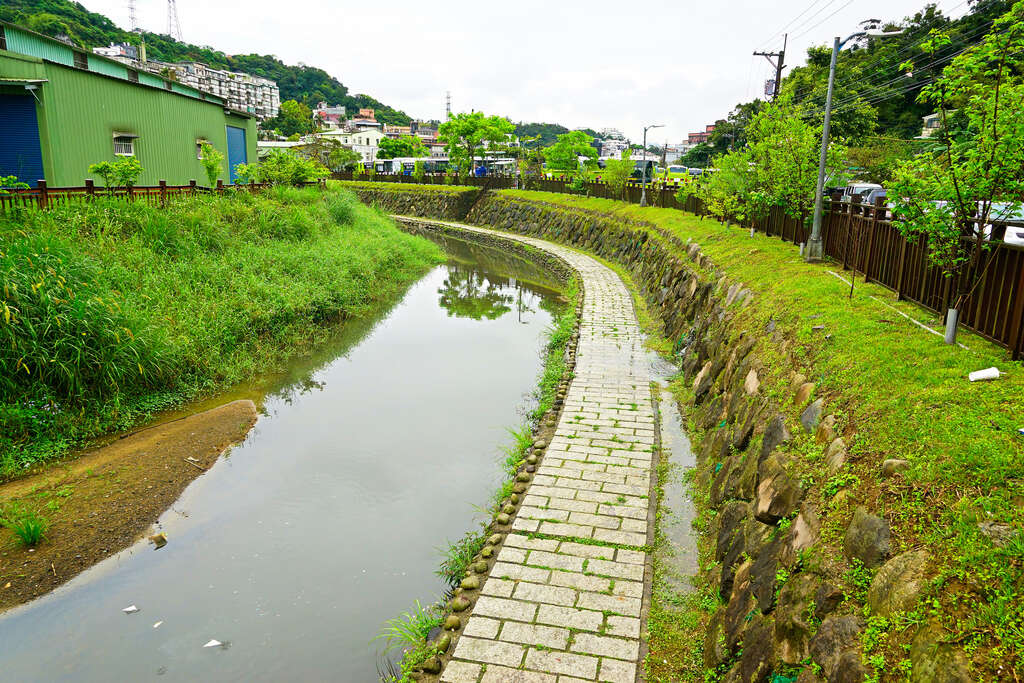Neikou Stream Ecological Trail Introduction
Neigou Stream is a tributary of the Keelung River, with a total length of approximately 5.5 kilometers and a watershed area of about 7 square kilometers. To the west of Neigou Stream is Taipei City, and to the east is New Taipei City. It serves as a popular spot for residents of the Donghu area to walk, relax, and socialize, while also being the best place for connecting with nature in Donghu. Since 2013, an overall landscape renovation has been underway in the swimming section of Neigou Stream. This includes nearly 1 kilometer of waterfront pathway extending from the upstream, linking Taipei and New Taipei City through scenic bridges and waterfront paths that were previously separated by Neigou Stream. The project aims to remove sediment, restore the environment of Wufenpi water area, create ecological habitats of varying depths, and establish an eco-educational space that allows visitors to connect with the mountains, water, and nature at any time of the day. This initiative is designed to enhance residents' willingness to engage and understand conservation, while also allowing the beautiful memories held by local elders to be revived. The project focuses on four main aspects: 1. Unique creativity and restoration of the local natural and cultural living environment; the overall engineering structure and design prioritize a lightweight approach that integrates the desired Jiangnan garden landscape, respecting and blending with the natural environment of Neigou Stream while considering aesthetic appeal alongside hydraulic and flood control engineering needs. 2. Preservation of the gradually established waterfront green corridor and opportunities for increasing riparian vegetation; under consideration of the flood control function of the embankment, greening is carried out in areas with available space on the top of the embankment to enrich the waterfront ecology and promote green growth. 3. Preservation and improvement of waterfront habitats; while prioritizing the safety of the embankment, the project also values the preservation and enhancement of natural ecological aspects in overall design, conforming to existing bank slopes and terrain while avoiding excessive excavation or disturbance of the ecology. 4. Energy conservation, carbon reduction, and sustainable development; in response to energy-saving and carbon-reduction needs, low-intensity lighting is used along the waterfront paths for safe nighttime walking while highlighting key scenic bridges connecting the two cities with lighting designs that create the imagery of stars along the waterfront. (Some information sources: Department of Water Resources, Public Works Department, Taipei City Government)



























